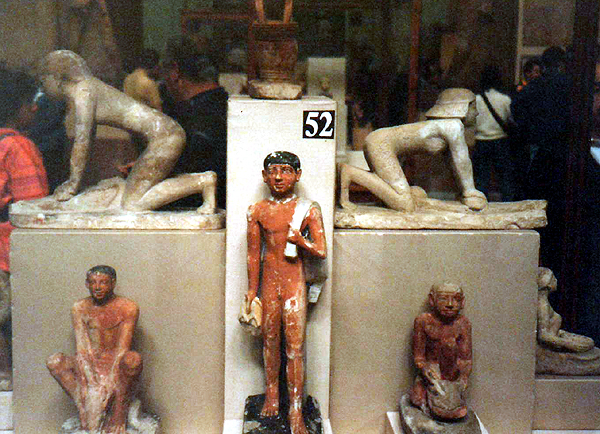
Servant Statues
Painted limestone. Old Kingdom.
Egyptian Museum, Cairo.
These statuettes come from the late 5th dynasty tomb of Prince Ur-irni in Saqqara (24th century BC). They carry on the activities necessary to support the deceased in his afterlife. The woman in the upper left is Ishat - her name is inscribed on the base of her statue - and she is grinding grain. Other people in this group are washing jars, brewing beer, etc.
Statuettes like these are commonly called "servant" statues. However, according to Lawrence Berman, they actually represent friends and relatives of the deceased. Being depicted in this way, they could help the deceased in the afterlife and share in his funerary offerings. (Lawrence M. Berman, "Hetepheres & Company," KMT, Volume 14 Number 4, p. 32.)
Scenes from everyday life, such as these, are portrayed informally, in contrast to the stiff representations seen in formal portraits of the nobility.


